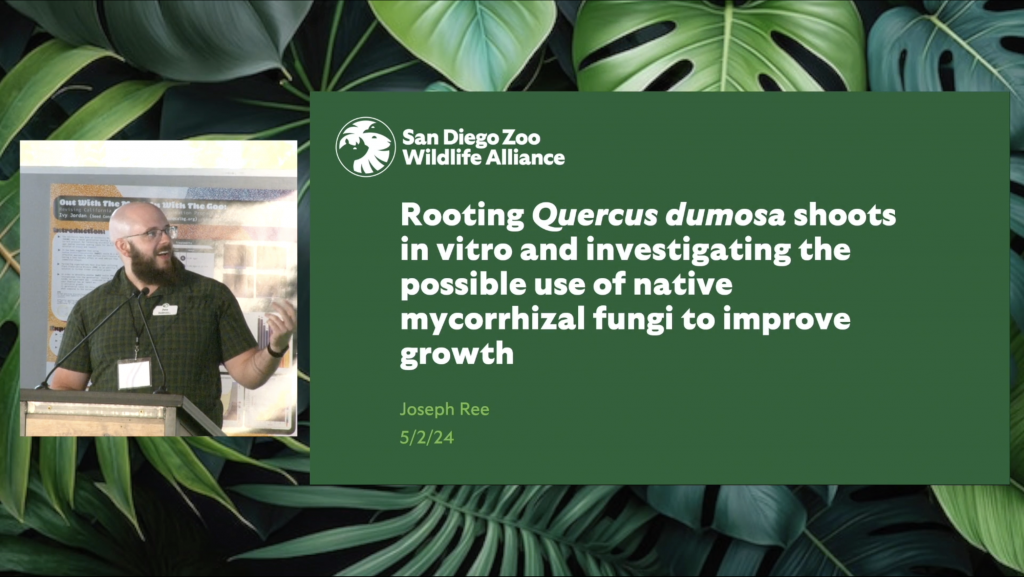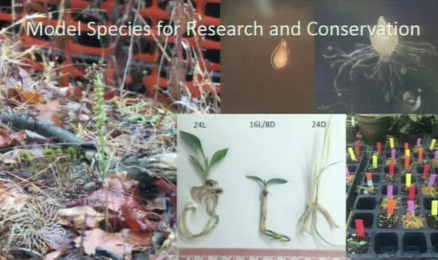
Quercus dumosa, or the coastal sage scrub oak, faces numerous threats to its native range, such as fires, urban development, and climate change. Unfortunately, Q. dumosa’s acorns cannot survive the dry conditions required for seed banking, and living collections require considerable space. One alternative for ex situ conservation is tissue culture, in which microplants from many individuals […]
Read More…
Asimina manasota plants growing in vitro at the Lindner Center for Conservation and Research of Endangered Wildlife at the Cincinnati Zoo and Botanical Garden (CREW). […]
Read More…
showing new axillary buds in a test tube on June 12, 46 days after inoculation. […]
Read More…
Quercus hinckleyi in vitro. Photo by Max Winkeljohn. […]
Read More…
Although many rare plants have seeds that can be stored by conventional methods, not all species have seeds that can live after drying or freezing. Sometimes called “Exceptional plants, ” these species have a wide range of variation. Some produce few or no seeds, thus they cannot be seed banked, others have seeds or spores […]
Read More…

Peter Zale and Matt Taylor, Longwood Gardens Several species of Spiranthes native to the Eastern U.S. are considered rare, threatened or endangered by federal and state agencies. Using the Pennsylvania endangered Spiranthes casei as a model species, experiments were designed to determine optimal conditions for in vitro seed germination and seedling development. Seeds were collected […]
Read More…

